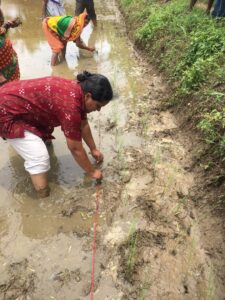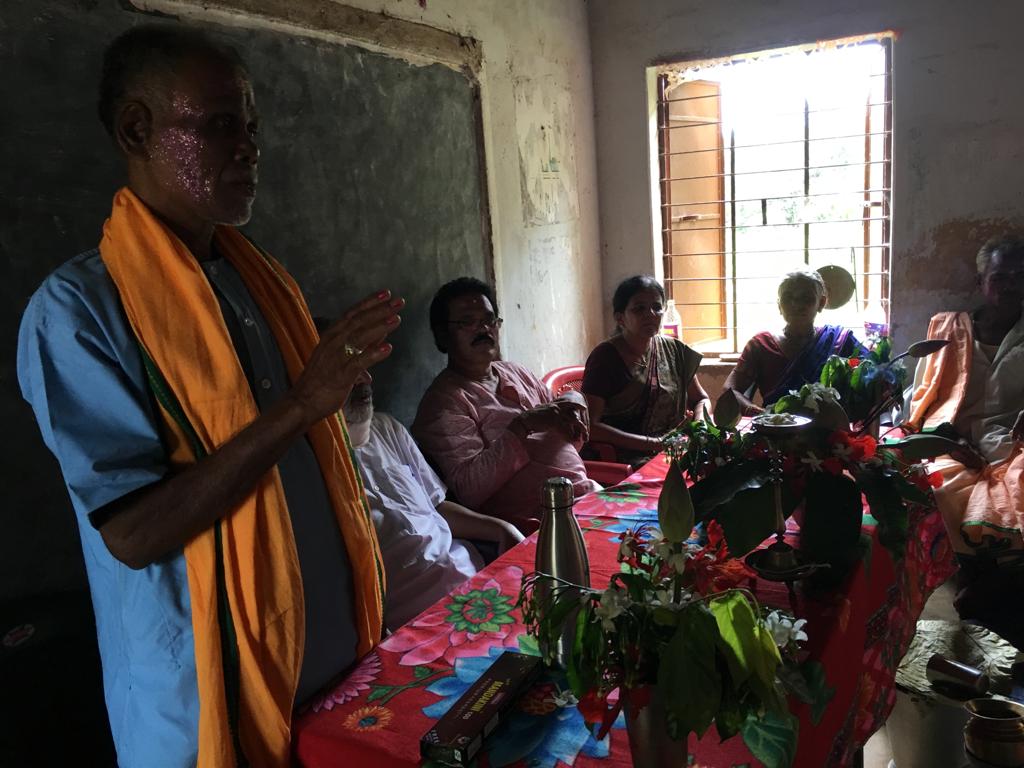When tropical cyclone Fani made landfall on India’s east coast at the start of May this year, the authorities had moved over a million people from their homes in order to keep the toll on human life to a minimum. Nonetheless, Fani killed 64 people in the state of Orissa alone and caused an estimated $2.46 billion worth of damage. For many, though, Fani wasn’t even the worst of it, coming as it did after severe summer hail storms that destroyed food crops across the state.
Three months on and 24 of the 30 districts in Orissa are affected by drought, which is already impacting on crop production and leading to ‘distress’ migration.
These events, these ‘phenomena’ are not unique to Orissa and they are not unique to now. But they are turning into the new ‘normal’ and as a result, people across the state, the nation – the globe, even – are having to learn to adapt, to build their resilience to this changing climate.
Indigenous cultures hold many answers
At the start of July, when the rains are expected to start and rice transplanting will begin for the kharif (or monsoon) season, members of the Kandha tribe in Ganjam district, Orissa, come together to celebrate the diversity of rice varieties they have in their stores. It is this store that is their weapon in the fight against climate change, this store of diversity.
There were once many thousands – some say around 200,000 – of rice varieties in India. Thanks to traditional cultures, there are still many hundreds of varieties available, many of which can grow in stressed conditions.
Seed preservation is very much the women’s domain and they use this ritual to share with other women the seeds they have so carefully preserved and the prized properties each variety possesses.
In 2018, organic farmer and social activist, Sabarmatee, received India’s highest civilian award for women’s empowerment, the Nari Shakti Puraskar . She works with these local women and has helped with organising their ceremony.
“In 2013,” she says, “we had another serious cyclone, called Phailin. The wind speed reached 150km per hour. At that time, we had 350 varieties, and out of those, 37 varieties could withstand that wind speed. They were just half bent over – they were not completely lost.”
Sabarmatee is very interested in the potential of this traditional biodiversity because she grows what is probably the world’s biggest collection of indigenous seed varieties under what is known as the System of Rice Intensification, or SRI.
What is SRI?
 SRI is a way of growing rice that is quite different to the conventional method. Normally, people will plant older (45-day) seedlings in tight clumps and in flooded fields. SRI requires that seedlings are just 8-10 days old and are planted singly, wide apart in a grid and in drained soil.
SRI is a way of growing rice that is quite different to the conventional method. Normally, people will plant older (45-day) seedlings in tight clumps and in flooded fields. SRI requires that seedlings are just 8-10 days old and are planted singly, wide apart in a grid and in drained soil.
SRI works best under an alternate wet and dry system of water management. It requires less water, up to 90% fewer seeds, less labour and it yields more than conventionally-grown rice. And with particular reference to climate change, SRI plants produce stronger root systems which means they can withstand strong winds, flooding and very dry conditions. “Growth is so vigorous with SRI. We first learnt about it in 2006 in March, when it was not a rice-growing time so we just planted a few seedlings to practice, to see how to do it. And you won’t believe me, the temperature went up to 35+. We didn’t even have water to irrigate those few plants. And for 15 days, they withstood that.”
For Sabarmatee, as well as offering a way to build resilience to extreme weather, SRI is also a means of preserving multiple rice varieties in a very small plot of land. “We have just 2 acres of land here. The question for me was: how can I collect more and more indigenous varieties, conserve them here and be able to share with people? SRI showed us the way to conserve indigenous varieties.” Sabarmatee goes on to describe how with just 200 10-15-day old seedlings spaced 10 inches x 10 inches apart, it is possible to produce enough seeds for 1 acre next year.
The wonder of indigenous seeds
“You know,” continues Sabarmatee, “the indigenous varieties have been knocked down, they became the ‘bad boys’ for scientists, mostly rice scientists, who said that they don’t produce so much. And this has been the idea floating around, injected into the minds of people over the many years of the green revolution, which started in India. So, research was more and more concentrated on rice breeding.” But having grown so many varieties now and having seen the high yields and resilience many of these have to severe weather, she has become more convinced of nature’s own capacity to breed resilient rice. And this isn’t just a way of fighting severe weather. Indigenous varieties grown under SRI conditions have also shown resilience to pest and disease.
“When you have so many varieties, you also have so many pests and diseases and we’ve studied that too. It’s very interesting. Like, if you have two varieties just next to each other, one variety can be affected by blast (fungus) and the other one doesn’t have anything. Absolutely nothing. Even as the neighbour of this diseased plant! And then we have learnt that OK, this means it tolerates blast, you know. It’s blast resistant. So we could now recognise all these properties and then if someone comes and says that in their area there is a big blast problem and ‘do you have a variety for that?’ ‘Yes, we do!'”
And so the 2019 rice season begins
The transplanting starts with a ceremony which opens with prayers to Mother Earth, to Devi Lakshmi and to the rice plants.
Sabarmatee now grows well in excess of 450 varieties and has the tiny seedlings ready and organised for transplanting.
With the drought conditions that prevail right now, it is not going to be an easy season. There is a little water remaining in the ponds at Sabarmatee’s farm, Sambhav, which are fed by a canal. Enough, it is hoped, for these small plants to establish themselves. The SRI planting will hopefully give them the chance of surviving whatever the weather throws at them. It remains to be seen how many of the 450 varieties make it. But many will and Sabarmatee will have a good store of rice she knows will produce climate resilient crops, and that prized knowledge she will be able to share next year, with the women of the Kandha tribe.
Sabarmatee has a Facebook page for her farm, Sambhav
To learn more about SRI, visit the Cornell University SRI-Rice Center
Further reading
Odisha’s Sabarmatee Tiki receives ‘Nari Shakti Award’
Diversified Farming
Pests fail to attack traditional variety of paddy
















 SRI is a way of growing rice that is quite different to the conventional method. Normally, people will plant older (45-day) seedlings in tight clumps and in flooded fields. SRI requires that seedlings are just 8-10 days old and are planted singly, wide apart in a grid and in drained soil.
SRI is a way of growing rice that is quite different to the conventional method. Normally, people will plant older (45-day) seedlings in tight clumps and in flooded fields. SRI requires that seedlings are just 8-10 days old and are planted singly, wide apart in a grid and in drained soil.